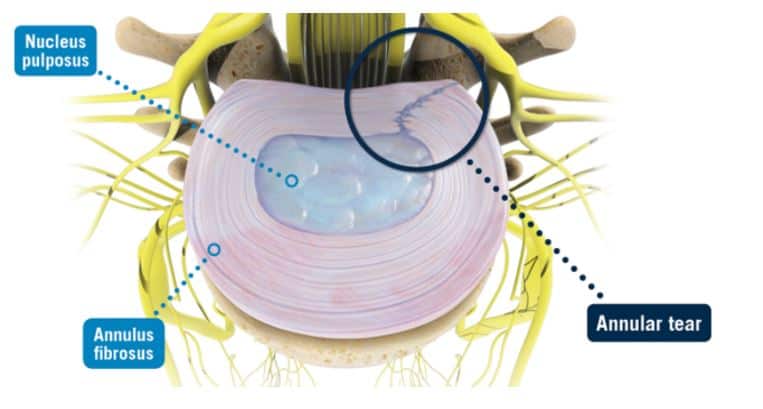We Are Annular Tear Experts
state of the art ultrasonic Annular Tear Treatment
What is Annular Tear ?
An annular tear occurs when the tough exterior of a spinal disc (the annulus fibrosus) rips or tears. Discs in the spine serve as cushions between the vertebrae, providing support to the bone structure of the neck and back while also acting as shock absorbers. If too much stress is exerted on a disc, either from the continual performance of everyday activities such as sitting and standing or as a result of sudden trauma, an annular tear can occur. Read on to learn about the types of annular tears, the diagnosis process and the treatments available.
The disc wall is constructed in several layers, each of which can become torn. The nature of the tear and the layers it affects will be the basis for how the tear is categorized:
- Radial tears. Typically caused by the natural aging process, radial tears begin at the center of the disc and extend all the way through the outer layer of the disc wall. These tears can cause a disc to herniate, which occurs when the gel-like center of a disc extrudes through the tear to the outside of the disc.
- Peripheral tears. These tears occur in the outer fibers of the tough outer layer of the disc and are usually brought on by traumatic injury or contact with a bone spur. Peripheral tears can lead to the degeneration or breakdown of a disc in the spine.
- Concentric tears. When a tear occurs between the outer layers circumferentially, it is called a concentric tear, which is usually caused by injury.
